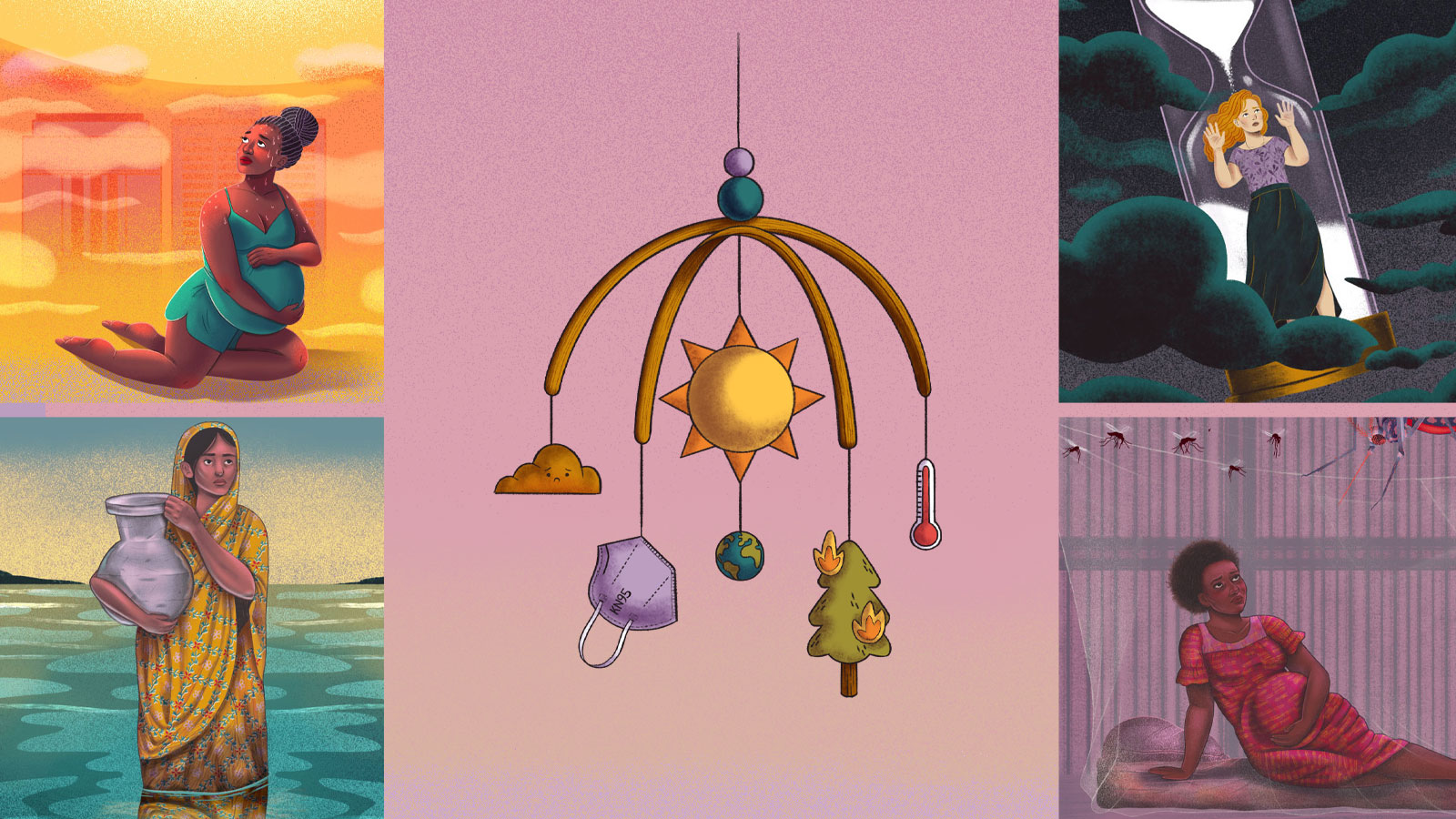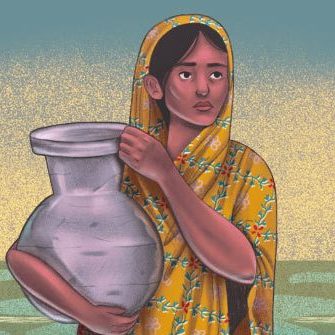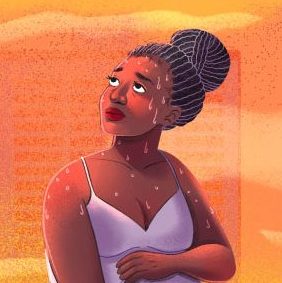International climate change panels often point out that women are more vulnerable to climate change than men. Hotter temperatures and more volatile weather inflame existing gender-based vulnerabilities, like domestic violence, inadequate access to health care, and financial insecurity. But there is another, largely invisible layer of climate impacts that falls along gendered lines: Research shows that climate change takes a profound physical toll on bodies that can bear children — from menstruation to conception to birth.
There are various pathways by which climate change worsens health problems before, during, and after pregnancy. A pregnant person’s immune system stands down during those crucial nine months so as not to reject the growing fetus, leaving the gestating parent more susceptible to climate-driven infectious diseases like malaria. Exposure to extreme heat during pregnancy increases the likelihood of preterm birth, although the biological mechanism behind this relationship is still poorly understood. Sea level rise infuses drinking water with salt, which can lead to high blood pressure — a risk factor during pregnancy for premature birth and miscarriage. And for those who have access to fertility treatment, which involves highly time-sensitive procedures, increasingly massive and intense storms are making assisted conception unpredictable.
Salt in the womb: How rising seas erode reproductive health
Women in Bangladesh are confronting the dangerous health effects of consuming salty water. They won’t be the last.


Four lost pregnancies. Five weeks of IVF injections. One storm.
A couple spent years and tens of thousands of dollars trying to have a baby. Then Hurricane Ian hit.



‘How did we miss this for so long?’: The link between extreme heat and preterm birth
Heat waves are making pregnancy more dangerous and exacerbating existing maternal health disparities.



Pregnant in a warming climate: A lethal ‘double risk’ for malaria
Mosquitoes are moving into the mountains of Papua New Guinea and other highland areas. That could be a death sentence for pregnant people.


After years of neglecting to study the climate-related health conditions that affect women and gender minorities who can get pregnant, the medical establishment is just beginning to understand the scope of these threats. At a moment when reproductive autonomy is under political attack, climate change is making it even more dangerous to have a uterus.
Here, you’ll find a package of stories that will help you understand a few of the profound effects warming has on people who can get pregnant. The full range of climate-related reproductive threats is vast, and this series doesn’t touch on all of them. Instead, it provides a series of snapshots — four windows into the lives of women who are facing unexpected risks as they attempt to conceive, gestate, and give birth to children in a warmer world. Their stories are a warning to us all. —Zoya Teirstein
Credits
WRITERS | Zoya Teirstein, Virginia Gewin, Jessica Kutz, Mahadi Al Hasnat
STORY EDITORS | L.V. Anderson, Paige Vega, Kara Platoni
MANAGING EDITOR | Jaime Buerger
ART DIRECTION | Teresa Chin
ILLUSTRATIONS | Amelia K. Bates
DATA VISUALIZATION | Clayton Aldern, Jasmine Mithani
COPY EDITORS | Claire Thompson, Joseph Winters, Kate Yoder
FACT CHECKERS | Sarah Schweppe, Melissa Hirsch, Caity PenzeyMoog
PARTNERSHIP MANAGERS | Rachel Glickhouse, Abby Johnston, Megan Kearney
AUDIENCE + ENGAGEMENT | Myrka Moreno, Justin Ray, Shira Tarlo
DESIGN + DEVELOPMENT | Mia Torres, Jason Castro, Mignon Khargie




